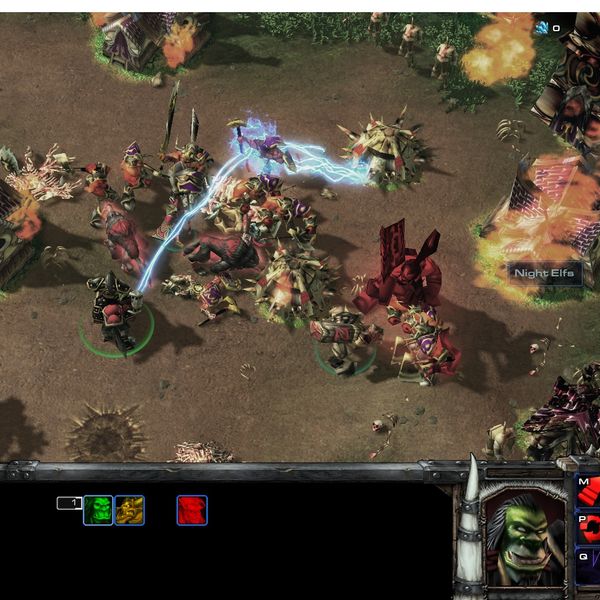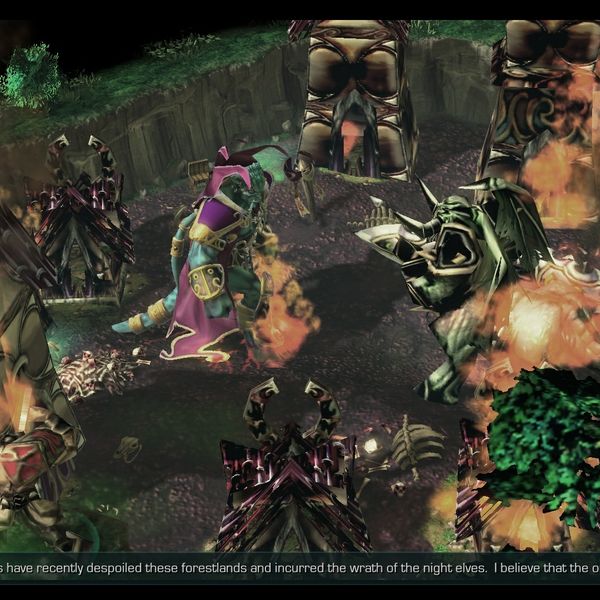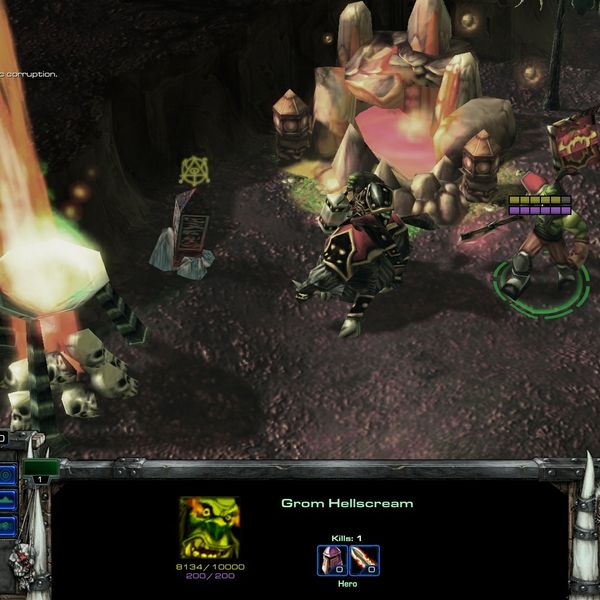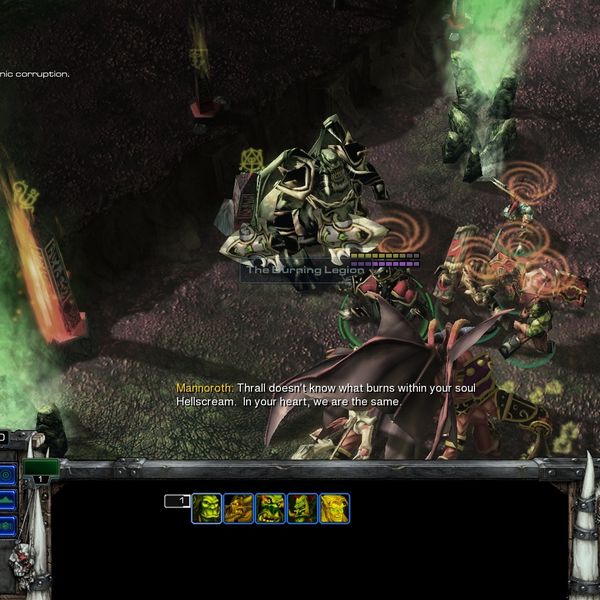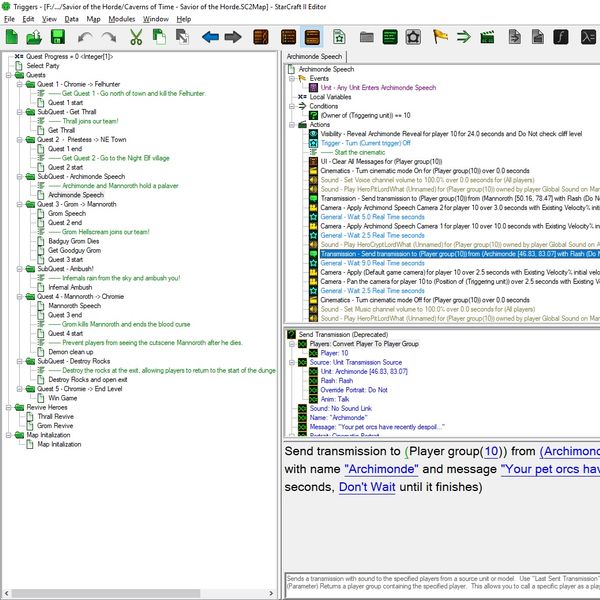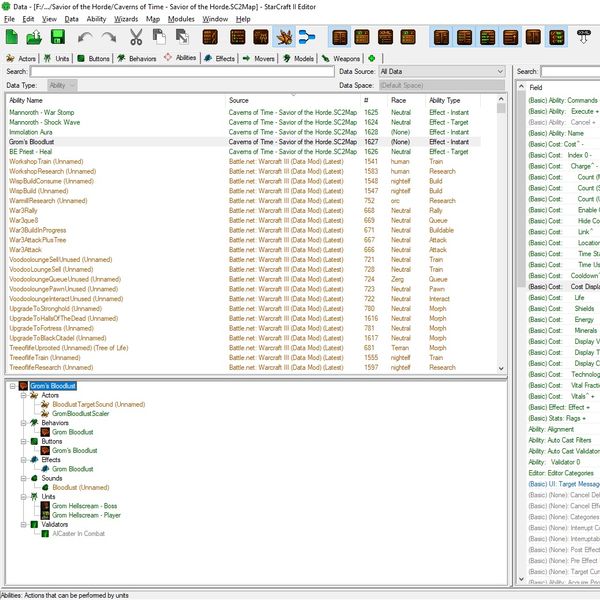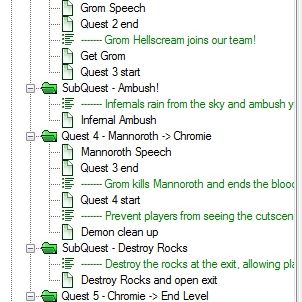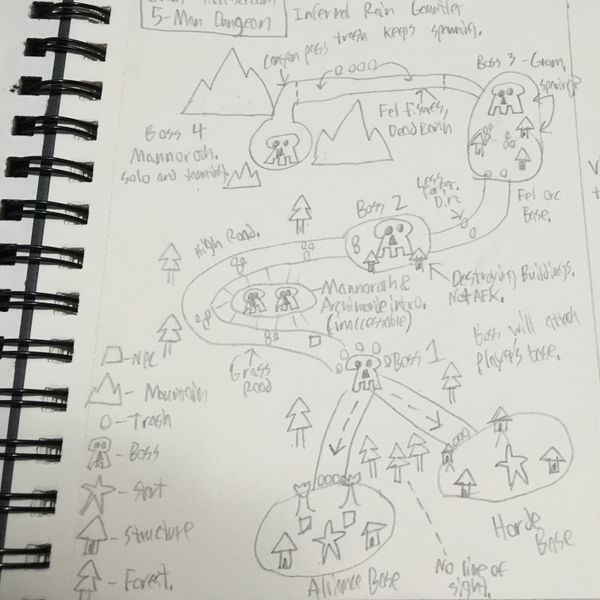World of Warcraft is a MMORPG where players choose a class, race, and faction for their hero then explore the world experiencing wondrous adventures. Players can complete quests, dungeons, high level raids, or fight each other in PvP matches.
- Based on: World of Warcraft
- Team Size: Solo Project
- Engine: Starcraft II Galaxy Editor
- Game Mode: Single Player
- Concept & documentation
- Designed abilities, level, & quests
- Scripted abilities, events, dialogue, & AI
- Optimization & balance
- Prototyping & playtesting
Overview
Savior of the Horde is a five man dungeon for World of Warcraft set in the Caverns of Time. In this dungeon you lead a party of players who will travel to the past to experience the events that took place between Grom Hellscream and the demon Mannoroth. This dungeon will teach any current WoW players who had never played Warcraft III about Grom and how his legacy affected his son Garrosh through interactive gameplay.
I made this dungeon entirely in the Starcraft II editor using only Warcraft III art assets. I went out of my way to recreate skills and abilities from Warcraft III so that players who played the original game would get their nostalgia kick. I did have to change the level and dialogue to match WoW's 5 man dungeon system, but I think I stayed true to the story.

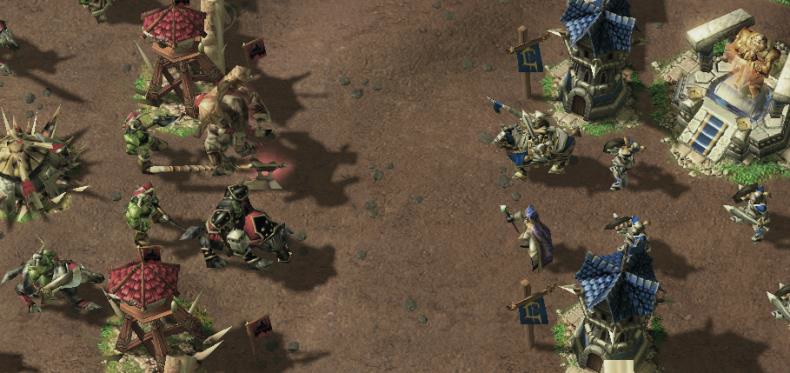
My Role
I built the quest system that tracked and updated objectives, spawned units, and revealed portions of the map. This allowed me to set the pacing in my level by tuning when and where events and dialogue would be triggered. I also recreated Warcraft III behaviors and abilities for units to make the combat more interactive. During playtesting, I realized that having abilities on every hero was extremely hard to use for players not accustomed to Starcraft II. To make these abilities easier to use, all Active Powers were moved to the hero Thrall, and all other abilities were removed or set to autocast. This allowed my players to focus on the quest and experience rather than micromanaging their units.
One major goal I had for this map was "show don't tell" and "play don't show". To achieve this I removed mandatory cutscenes that took away control from the players which allowed them to continue playing during dialogue. I also used the environment to tell my story: the Horde and Alliance show tension as their bases and leaders stare each other down, the demon Archimonde stands in the ruins of a night elf town that he obliterated, the bloodthirsty Warsong Orcs are actively sacking a city when you meet them. These helped breathe life into my world in ways that text could never do.
